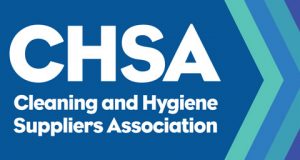Amazon claims to have sold tens of millions of its voice activated Echo devices in 2018, with the number of people using Alexa each day doubling throughout the year. This exemplifies the rise of touch-free technology, a trend that is likely to grow exponentially. Consumer demand for this technology is largely driven by convenience and the ability to save time, but it may also have an unintended benefit – it can improve hygiene.
By limiting the number of shared touchpoints a worker encounters, touch-free technology can help to reduce the spread of bacteria and illnesses. The Centre of Disease Control and Prevention estimates that 80% of all infections are transmitted by touch. This cross contamination happens quite easily as bacteria and microbes can survive on hard surfaces – meaning any time a person sneezes, coughs or uses the washroom without washing their hands, they can then contaminate items they go on to touch later such as door handles and work stations.
Touch-free technology is a worthwhile investment when you consider the number of shared items in the office such as door handles, desks, keyboards, computer mice, and kitchen items like tea caddies. It can play a vital role in helping to prevent the spread of illnesses and limiting the number of sick days in the office.
A hygiene hot spot
Washrooms should be at the epicentre of good hygiene efforts. This is especially the case given a study by Initial Washroom Hygiene found that a third of office workers use their office washroom as a place to escape work because they don’t have enough break out space elsewhere. What’s more, a third wished their employers would put more effort into improving the state of their washroom, and 20% claimed that they worried they had lost clients due to state of their washroom. It is worth remembering that unhygienic spaces are not only damaging to health, but also to reputation.
Unfortunately, a facilities or office manager’s efforts to ensure the adequate waste disposal and regular cleaning of washroom facilities is not enough to ensure optimal hygiene on its own. Employees must be relied on to wash their hands regularly and properly, so equipping washrooms with enough sinks, soap dispensers and hand drying options is vital. Using touch-free technology – for example soap, sanitiser or paper dispensers – will make this process even more convenient and, by removing the point-of-contact with bacteria-covered surfaces, more hygienic too. Equally, no-touch technology ensures users dispense the correct amount of soap or sanitiser to efficiently cleanse hands.
Keeping things sanitary
According to our research, 54% of women in the UK have experienced a situation where the washroom did not have a personal female hygiene unit. Even if your washroom lacks space, every female user should have access to a sanitary bin within each cubicle to ensure a discreet and hygienic washroom experience. When considering the bins to install in your female washroom, a no-touch sanitary bin will also limit the number of touchpoints and can help to stop the spread of bacteria within the washroom environment.
 Final words
Final words
For office managers, efforts to promote good hand hygiene and cleanliness is not just good for hygiene, it’s also good for business. It can play a significant role in helping prevent the spread of illness and can reduce the number of sick days in the workplace. By investing in and embracing touch-free technology, you’ll demonstrate a proactive and convenient approach to hand hygiene, which won’t go unnoticed by employees, guests and the organisation’s bottom line.
By Jamie Woodhall, Technical & Innovations Manager, Initial Washroom Hygiene





